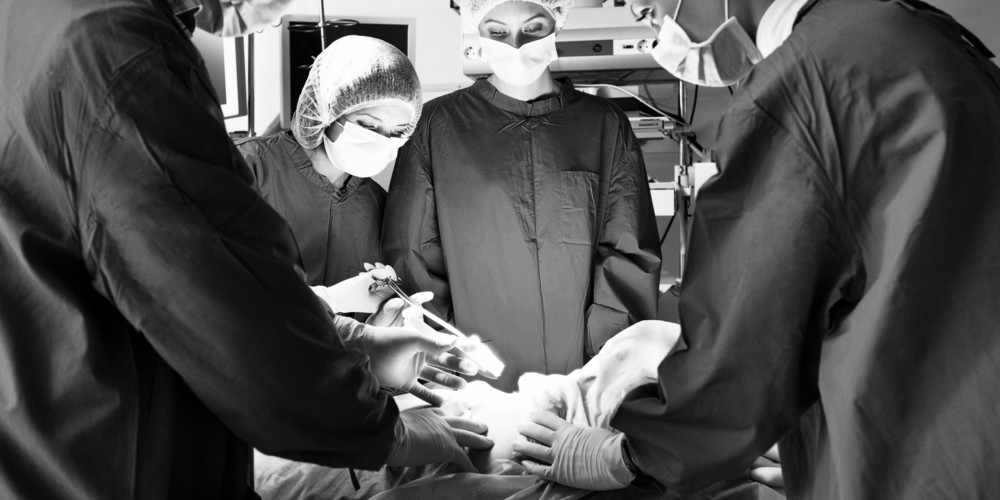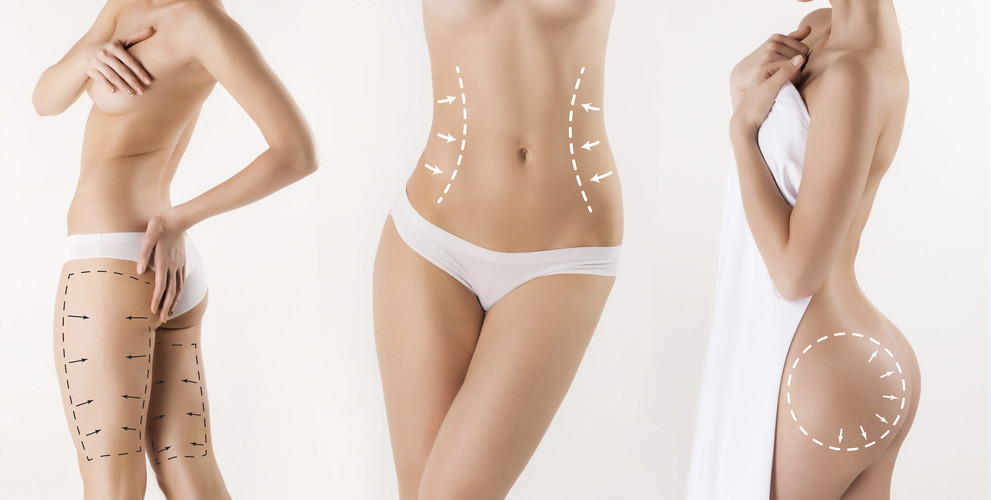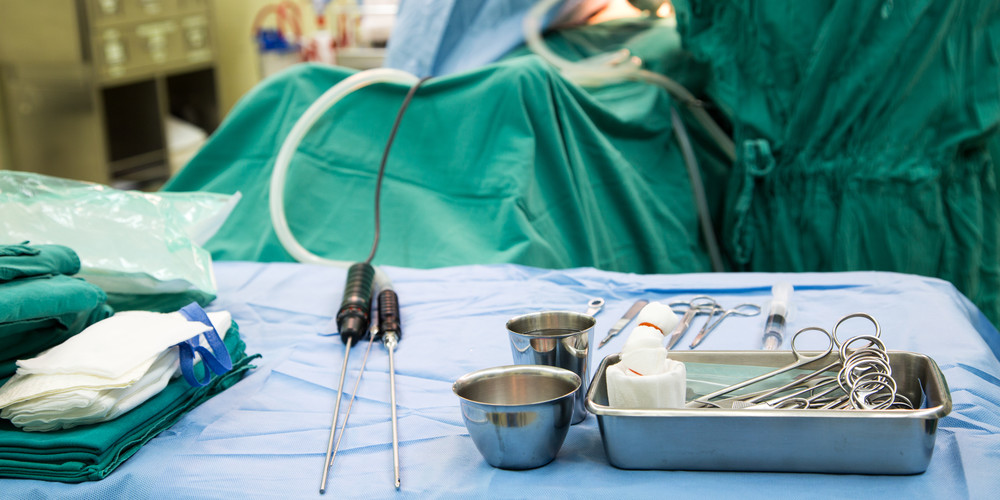If you long for more shapely knees, and a healthy diet and regular exercise are not helping to shift your excess knee fat, knee liposuction is an option worth considering.
Updated on August 2017
What Is Knee Liposuction?
Knees are often named the least-loved body part of both women and men alike. However, a well-contoured and defined knee can be a thing of beauty, streamlining and elongating the leg.
Unfortunately for some, small pads of fatty tissue can collect around the patella (knee cap). These fat deposits can be a result of excess weight, genetics or related to hormonal changes in women brought about by childbirth or menopause. Shifting knee fat with exercise or weight loss may only register very small improvements. Definition between the gastrocnemius muscle and knee is obscured by this excess fat, giving the knee a thickened and shapeless appearance.
Liposuction (also referred to as lipoplasty or lipolysis) can easily and effectively remove this bulge, improving the appearance of the legs by rendering the knee bone more prominent and the knee more contoured overall. If you long for more shapely knees, and a healthy diet and regular exercise just aren’t helping to shift your excess knee fat, knee liposuction may be an option worth considering.
Liposuction is one of the most popular plastic surgery procedure in the United States for good reason: it offers consistent and predictable results that leave many patients very satisfied.
The Benefits of Knee Fat Surgery
For many patients, the removal of even a tiny amount of fat can make a dramatic difference to the overall aesthetic of the leg, helping it to appear slimmer and more symmetrical. One treatment may be all that is necessary to re-contour the knees; however, many patients choose to undergo inner thigh liposuction at the same time to attain beautifully proportionate results that enhance their overall silhouette.
Some patients may also choose to simultaneously undergo a knee lift, a relatively new procedure that is gaining a cult following among celebrities for its ability to eradicate ‘kninkles’ (knee wrinkles), promote collagen production and tighten loose skin above the knee.
You may notice the following benefits after undergoing knee liposuction, especially if undertaken in conjunction with inner or outer thigh liposuction:
- A more toned-looking leg
- More comfort when walking or running
- Greater confidence wearing clothing that exposes the knees

RELATED: How to Get Rid of Cankles
Who Is a Good Candidate for Knee Liposuction?
If you would like to determine if knee liposuction could be an appropriate option for you, the following criteria outlines the traits of good knee liposuction candidates.
You should:
- Have fat deposits in the inner knee area (medial patella) or front knee area (anterior patella) as opposed to above the knee (liposuction performed above the knee often results in wrinkly skin unless carried out in conjunction with a knee lift).
- Have good skin elasticity with no sun damage or sagging. Patients with looser skin can still undergo knee liposuction, but are more likely to experience some form of wrinkling as a result.
- Be arthritis-free in your knees (individuals with arthritis tend to have bumps around the knees).
- Have realistic expectations about what liposuction can achieve and understand that it’s not a replacement for a healthy diet and exercise.
- Be in good health and not suffer from autoimmune deficiency disorders, cardiac disorders, bleeding disorders or hemophilia, as well as have no significant history of deep vein thrombosis (blood clots in the legs) or pulmonary emboli (blood clots in the lungs), which may increase the risk of complications.
- Not currently be taking medications that increase the risk of bleeding (such as herbal supplements, aspirin or anticoagulants such as Coumadin) or any drugs that may inhibit the metabolism of Lidocaine, the local anesthetic used in tumescent liposuction technique.
Finding a Surgeon
Choosing a competent and experienced surgeon to perform your knee liposuction procedure merits careful thought and research. You should feel free to ask prospective surgeons a range of questions in order to learn about their perspectives and experiences in relation to patient safety, board certification, surgical expertise and training.
Safety
There has been some contention regarding the maximum quantity of liposuction that can safely be performed on a patient in a single day. Across the United States, opinion from professional boards varies slightly, fluctuating between the removal of 4 to 5 liters of aspirate (fat and fluid).
Surgeons who place a strong emphasis on safety agree that it is dangerous to remove more than this recommended upper limit. In the rare cases where there have been serious complications arising from liposuction procedures, many were the result of an excessive amount of liposuction carried out in one day.
If you are undergoing knee liposuction in conjunction with lipo on other parts of the body, such as inner and outer thigh liposuction or abdominal liposuction, be sure to query your surgeon about the upper limit of aspirate they will remove in one procedure, along with their views concerning safety.
Board Certification
Certification from the American Board of Plastic Surgery (ABPS) is your best bet to ensure safety and satisfaction. Board certification guarantees that your surgeon has surgical specialization, has undergone rigorous training, observes patient safety to the highest degree and also carries out regular professional maintenance in order to achieve this status.
Knowing that your surgeon is board-certified provides you with peace of mind so, in the unlikely event that a serious surgical emergency occurs, you know you are in good hands.
Experience
The qualifications for practicing liposuction are not rigidly defined. Many surgeons who excel in liposuction may have received training during their residency as dermatologists or general surgeons.
What’s more important is that the surgeon has extensive experience in performing their preferred liposuction technique(s) – be it tumescent liposuction, ultrasound-assisted liposuction or laser liposuction – is up-to-date with the latest advances in the field (‘dry’ liposuction, for example, is now widely considered outdated) and has an excellent patient safety record.
Ask to see before and after photos of patients who have also had knee liposuction, to get a sense of both how many procedures the surgeon has performed as well as a better idea of realistic results.
Rapport
Ultimately, the surgeon you choose to perform your knee liposuction should make you feel comfortable and safe. You should expect honesty regarding anticipated results and transparency about any possible complications that may arise.
Check out the surgeon’s reputation: what have others said about him or her? Does the surgeon who will be carrying out the actual procedure spend time with you? Ask about their safety record and whether they have ever had to deal with an emergency situation while carrying out liposuction. Feeling at ease to ask these kinds of questions and receive satisfactory answers is crucial.

RELATED: Finding A Surgeon You Can Trust
Questions to Ask Your Surgeon
Asking more probing questions can help inform you about what is involved in knee liposuction, and also make you cognizant of any risks or complications that may occur.
Here are several important questions you may wish to ask before you commit to undergoing knee liposuction:
- Where do you carry out knee liposuction?
- Is the facility where the procedure is performed medically accredited and recognized?
- Would I need local or general anesthesia?
- Would I need to undergo liposuction on other parts of my legs for the best results?
- Are there any specific risks that I would face as a result of the procedure?
- How long would I need to recover before returning to day-to-day life?
- What kinds of complications could occur?
Liposuction Techniques
In the last few years, the types of liposuction available have multiplied at a breathtaking pace. Many patients feel confused when trying to determine the difference between new trends such as Smart Lipo, Ultra Lipolyse or Vaser.
However, the advice consistently communicated by top surgeons is that catchy names, clever marketing or trademarked techniques do not equate to superior methods or better results: what really makes the difference is the competence of the professional carrying out your procedure.
In essence, there are really only four variants of liposuction, all based on an original suction-assisted technique administered through small incisions in the skin. All of these techniques can effectively target fatty deposits in the knees.
Your surgeon will choose a procedure based on their experience and training in that procedure as well as on the capacity of the procedure to reduce fatty deposits and improve the appearance of your knees.
Tumescent Liposuction
Tumescent liposuction is one of the most common, safe and effective forms of lipoplasty. The technique uses a ‘wetting solution’ which involves a local anesthetic such as Lidocaine, saline solution and IV medications.
The wetting solution is injected into the targeted area which encourages the blood vessels to shrink and the fat cells to swell and harden, while a small cannula suctions fat from the site. This technique minimizes bleeding and reduces post-operative pain and bruising.
Power-Assisted Liposuction
Power-assisted liposuction uses a motorized cannula which vibrates very quickly and efficiently across the treated area (liposuction can be a manually exhaustive task for surgeons). The motorized action is actually easier on the body, allowing more effective destruction of fat tissue, more precise removal of fatty deposits and reduced scarring, bruising and bleeding.
The motorized cannula also means the procedure is, in general, shorter than other forms of liposuction.
Ultrasound-Assisted Liposuction
Like tumescent lipo, ultrasound-assisted liposuction also injects a tumescent fluid into the treated area. However, ultrasound liposuction differs as it uses a specialized cannula which transmits ultrasonic vibrations within the body, bursting and liquefying the fat cells thus rendering them easier to remove.
Ultrasound-assisted liposuction is therefore able to effectively target dense fat deposits and large fat deposits. It is also very successful at treating areas which require more precision, such as the knees.
Laser-Assisted Liposuction
Laser-assisted liposuction, or laser lipolysis, is effective in treating smaller, harder to access parts of the body that other liposuction methods have difficulty in targeting.
During the procedure, a cannula – that includes a laser – liquefies fat, leaving it to disperse throughout the body’s lymphatic system, or suctions the fat out. The heat from the laser also has the added bonus of subtly tightening the skin. The laser used in this procedure targets fat cells, leaving muscles, skin and nerves unscathed. This results in less pain and bruising and a shorter recovery time.

RELATED: Zwivel’s Complete Guide To Liposuction
Recovery Tips and Timeline
In general, it takes between 3 and 4 weeks to recover from knee liposuction. In some cases, recovery may take a little longer as the knees are located quite far from the heart, meaning healing does not happen with the same rapidity as other parts of the body. For this reason, the knees are also more prone to prolonged swelling, which may take several months to dissipate completely.
The length of recovery may also depend on the following factors:
- The type of liposuction you undergo (as discussed above, some techniques are more demanding on the body than others)
- The number of areas treated (liposuction of knees, buttocks and inner thighs will take longer than just the knees)
- Your general health and well-being
Depending on how you are feeling and the extent of liposuction you have undergone, you may need to take a day or several days off work to allow your body time to rest and heal. Be sure to take it easy, if this is the case, and keep your legs elevated on a pillow or the sofa to reduce swelling.
In rare cases, if a large quantity of fat has been removed and your knees are very swollen and tender, a wheelchair or support as from a cane may be necessary for up to a week to facilitate your mobility.
Make sure you return to your surgeon for any follow-up appointments and care so that your healing and progress can be assessed. You should expect some stiffness and mild pain around your knees for a couple of months.
The good news is that your recovery can be accelerated by how you care for yourself and your knees following surgery. Your surgeon will brief you about things you can do to help give your body the best chance of recovering quickly and without complications.
Here are some common postoperative recommendations made by surgeons:
- Wear a compression garment or bandage. These act as a support for the treated area, minimizing bruising and swelling on the knees by maintaining consistent pressure. They can also be easily concealed underneath long loose pants.
- Perform gentle self-massage. Stimulation of the lymphatic and circulatory system aids recovery by reducing swelling and accelerating healing.
- Carry out gentle therapeutic exercise. Movements such as seated calf raises or gentle heel lifts can be an effective method of stimulating blood flow and reducing swelling and bruising. Ask your surgeon for recommendations concerning exercise and frequency.
- Change your bandages regularly. In the period immediately following surgery, it is common for a significant amount of drainage to exit through the incision sites. You should expect the heaviest flow of fluid for the first two days following surgery. Frequent changing of the bandages keeps the treated site clean and dry, helping to avoid the occurrence of infection.
- Avoid placing undue strain on your knees for at least three weeks. Deep bends at the knee, running or strenuous lower body exercise can stress the knees as they recover and prolong the healing process. The knee is a delicate joint which will benefit from special care during your recovery. Your knees bear the brunt of your weight when you exercise so avoid exercising until your knees feel good and ready.
- Avoid sitting or standing for extended periods of time as this can exacerbate the swelling of the knees.
Risks and Complications
Liposuction, like all elective cosmetic surgery, carries possible risks. There are complications that can arise as a result of the type of liposuction technique carried out as well as complications related more specifically to the knee. The level of risk may be increased if the surgeon is working on multiple sites of the body or across a large surface area.
It is important to remember, however, that most risks can be diminished if you undergo surgery with a board-certified and experienced surgeon and follow all preoperative and postoperative care recommendations.
General liposuction risks:
- Toxicity can occur during tumescent liposuction if there is too much Lidocaine in the fluid solution injected and the body cannot metabolize it quickly enough.
- Fluid accumulation in the lungs can occur when too much solution is injected into the body during tumescent liposuction.
- There is a risk of burns, blistering and subsequent scarring linked to ultrasound-assisted liposuction.
- Seroma may occur during ultrasound-assisted liposuction, when the body attempts to fill the cavity left by fat with fluid. The fluid needs to be removed until the cavity has closed and healed. However, the likelihood of seroma occurring in the knees is very low.
- Contour irregularities may occur after liposuction. The skin can appear dimpled, lumpy or withered due to uneven fat removal and poor skin elasticity.
- Damage that has occurred beneath the skin due to the movement of the cannula may give the epidermis a permanently spotty appearance.
- Kidney or heart problems may arise as a result of changing fluid levels being injected into and suctioned out of the body.
- Fat embolism can occur if piece of fat breaks away from the treatment site and becomes trapped in the blood vessel, traveling to the lungs or the brain. If this occurs, it is a medical emergency.
Specific risks to the knee:
- There is a possibility of ending up with unevenly shaped knees: one knee may appear larger than the other.
- The movement of the cannula may cause damage to the sensitive tissue around the knee joint.
- Heavy bruising, soreness and stiffness in the knees can remain for a prolonged period of time after the procedure.
- The knees may appear asymmetrical following liposuction.

RELATED: Is Liposuction Painful? FAQS on Side Effects and Recovery
Maintaining Your Results
Liposuction is, and has been for some years, the most popular cosmetic procedure carried out in the United States. However, it is also a procedure that often carries extremely high expectations: many patients who undergo liposuction hope it will be a panacea for excess fat, cellulite and sagging skin.
Insufficient improvement is therefore often a common complaint among liposuction patients so it is important to have realistic expectations about what liposuction can achieve (often more subtle, as opposed to startling, results).
Maintenance of a healthy weight will help the results to last longer, and regular exercise will improve the muscle tone and strongly enhance the final outcome.
Knee liposuction patients may have to wait several months for swelling to subside before the new contours of the knee are fully visible and to enjoy the final results. If your knees were irregularly contoured before surgery, then it is highly likely that some irregularities will persist following liposuction.
Sagging skin will not reshape itself to the new contours and you may require additional non-invasive or invasive procedures to remove excess skin and tighten it; some surgeons recommend procedures such as JuVaShape to tighten the skin.
Knee Liposuction Cost
The cost of knee liposuction varies from patient to patient. Factors such as personal health, the difficulty of the procedure (the location on the knee that the fat is taken from), the quantity of fat to be removed, the liposuction technique used and the surgeon’s reputation and location all influence the final cost.
On average, you can expect to pay approximately $2,500-$4,000 for knee liposuction, though some surgeons may offer a discount if the procedure is carried out in conjunction with liposuction on other parts of the body, such as the buttocks, inner or outer thighs.
Liposuction of the knees is not covered by medical insurance as it is a procedure with cosmetic benefits as opposed to those that are therapeutic. Many clinics do, however, offer plastic surgery financing plans if the cost is inhibiting you from going ahead with the procedure.
Frequently Asked Questions
Who is a good candidate for knee liposuction?
If you sit within a relatively normal weight range with excess fat deposits around your knees (particularly on the inner knee) and have good skin elasticity and tone, then you are a good candidate for knee liposuction. You should also have realistic expectations about what the procedure can achieve and be in a good state of health to undergo anesthesia.
How long does recovery take?
The knee is closer to the body’s extremities, and therefore can take longer to heal than other parts of the body. You should expect to take 1-2 days off work to recover and rest your knees following the procedure and to spend 3 to 4 weeks avoiding strenuous exercise or placing strain on the knees. It may take several months for the swelling to completely subside.
How much does the procedure cost?
Generally, you can expect to pay around $2,500-$4,000, although the cost can vary depending on the type of liposuction you undergo, your surgeon’s reputation, the location of the surgery and the quantity of fat to be removed. If you are undergoing knee lipo in conjunction with other lipoplasty procedures such as an inner thigh lift, you may receive a discount.
How can I prepare for knee liposuction?
In the week leading up to your procedure, stop taking any medication with anti-coagulating properties such as aspirin or herbal supplements. Let your surgeon know all of the medication you are taking, no matter how commonplace, so they can assess whether or not it is safe (for example, some drugs can affect Lidocaine, the anesthetic used in tumescent liposuction).
Stop smoking and using nicotine-based products at least two weeks prior to surgery, as nicotine can elevate the risk of the occurrence of tissue death (necrosis). Shower the night before surgery as bathing after the procedure may be difficult for several days.
Finally, ensure your home is ready for several days of convalescence: have snacks and pain relief medication on hand and keep within easy reaching distance anything you could find necessary as you may not feel up to moving around.









